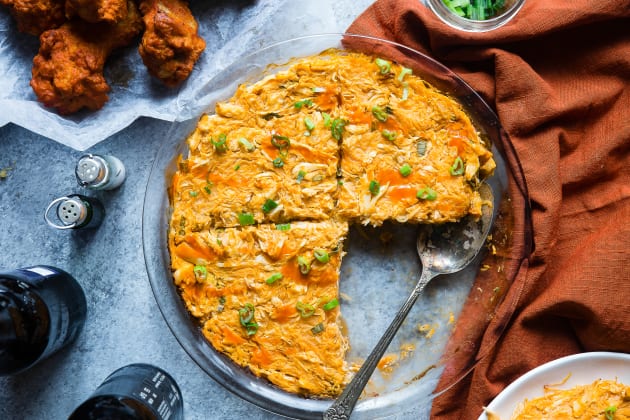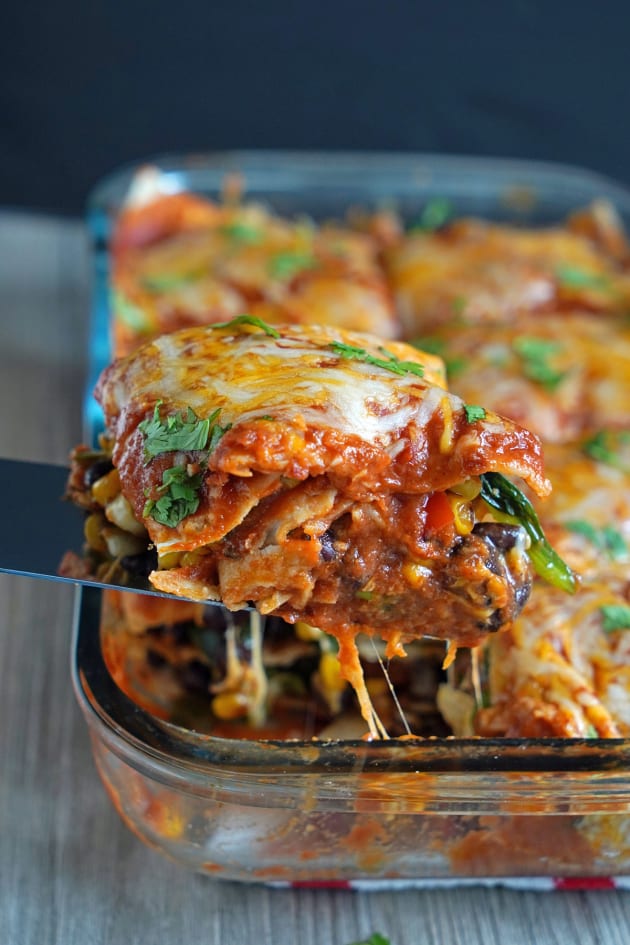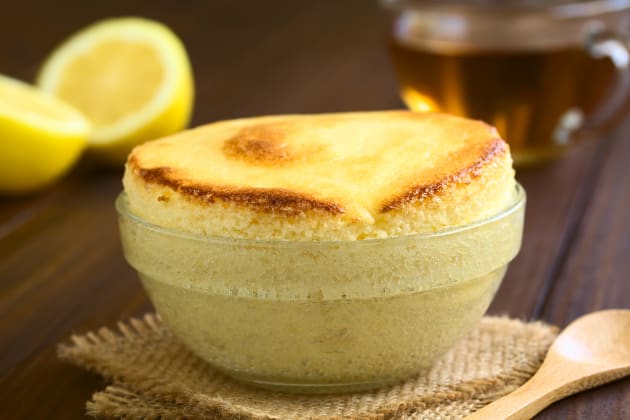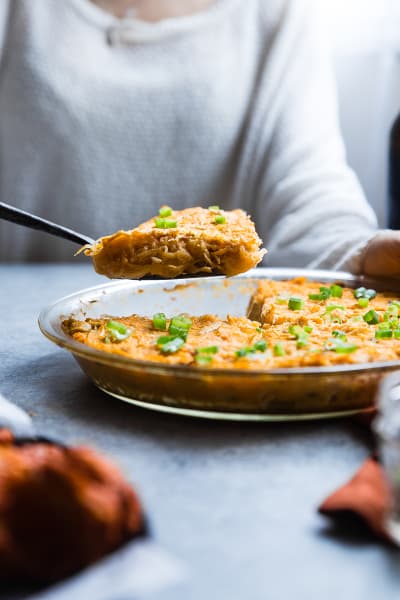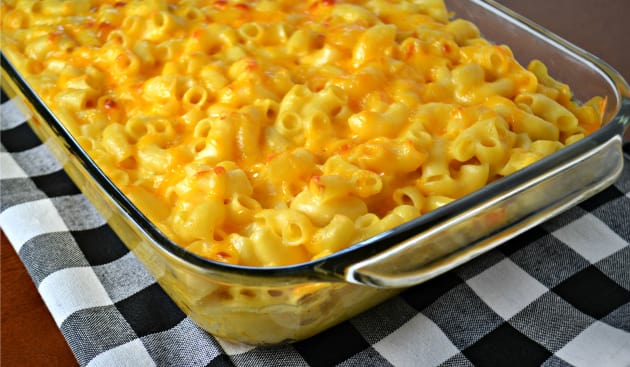Can You Put Glass in the Oven? What You Need to Know
Nicole AustinAll your questions about safe bakeware for the oven, answered.
When baking, many people have a strong preference for their desired bakeware.
Bakeware is made of a wide range of materials, composed of anything from stainless steel to stoneware.
The type of bakeware you use will either be dependent on practicality or the specific needs of your dish.
Many home cooks prefer a versatile dish, tray, or container as it can be used for a variety of cooking needs.
For example, a cast iron skillet can be used in the oven, but is generally not recommended for delicate baked goods as it holds heat extremely well.
Therefore, even those with a strong preference for cast iron in other circumstances will likely seek bakeware that is composed of a different material for their general baking needs.
Among the many varied kinds of bakeware, one that meets the criteria for versatility and simplicity is glass cookware.
Glass bakeware conducts heat well and allows the baker to better observe cooking foods.
(You know, because glass is clear.)
You can also cut your finished product if it is made in a glass dish without worrying about scratching or chipping the surface.
Can You Put Glass in the Oven?
Glass can be used as bakeware as long as it meets the required criteria.
Glass pans, such as casserole or pie dishes, are specifically created for use in the oven.
Not all glass, however, is heat resistant. Any glass that is labeled oven-safe is considered safe for appropriate use in the oven.
The manufacturer should provide you with the limitations of your product, such as the maximum cooking temperature or the ability to use the bakeware in the oven.
Glass that is not labeled oven-safe should never be used in the oven.
In other words, don’t assume just because something is made of glass that it’s safe! Do your homework.
Why Does Glass Crack or Break in the Oven?
Glass can break in the oven for many reasons.
Here are the most common explanations:
Rapid Temperature Shifts
Glass can break due to “thermal shock.”
Thermal shock is the result of severe, sudden temperature changes.
For example, taking a refrigerated dish and placing it directly in a preheated oven will cause a rapid change in temperature.
This could cause your pan to shatter and could lead to injury or other serious issues.
Also, do not place hot cookware directly into a sink where it may be exposed to a cool surface or water.
Using Non-Tempered Glass in an Oven
Tempered glass is considered generally safe for use in an oven, as long as it is used properly.
According to Scientific American, tempered glass is four times stronger than average glass.
Tempered glass is so strong that it is used for scenarios such as your vehicle’s windows, entrance doors to buildings, shower and tub enclosures, patio furniture, skylights, and microwave ovens.
Non-tempered glass should never be used in an oven.
Most forms of glass are non-tempered.
Examples of non-tempered glass include drinking glasses, glass dishes, mason jars, and glass serving ware.
Only glass labeled “oven safe” should ever be placed in an oven.
Glass without an indicator of being oven safe is not oven safe.
Heating the Glass to a High Temperature
Glass that is labeled oven-safe is considered generally safe to use in the oven, but that does not mean it is without risk.
Even oven-safe glass has a temperature limit.
Always refer to the manufacturer’s label or informational pamphlet or website to check the maximum allowed temperature for your glassware.
How to Avoid Glass Breaking in the Oven
Those who love baking with glassware may wonder how they can maintain the integrity of their baking dish and not risk the glass breaking in the oven.
These are the recommended steps to take to avoid your glass baking dish from breaking in the oven:
Avoid drastic, sudden changes in temperature:
Allow leftovers stored in glassware to come to room temperature before placing in the oven to reheat.
Only use tempered or borosilicate glass:
Glass that has not been tempered will break or crack in the oven.
Glass that is not tempered is not meant to be used in high heat situations.
Borosilicate glass is extremely safe for use with heat fluctuations and high temperatures but is more expensive and difficult to manufacture.
Borosilicate glass has recently been replaced by most manufacturers with soda lime glass that has been tempered.
Users that have grown accustomed to borosilicate glass products, such as older and more durable “PYREX” dishes, have had to adjust to new safety standards for “pyrex” dishes.
Look for the upper- and lower-case letters to determine what your product is made of, and ALWAYS refer to the manufacturer for specifics.
Only glass with an oven-safe label should be placed in your oven.
Avoid high heat:
Most glassware manufacturers suggest using temperatures no higher than 350°F.
However, some companies have a higher heat range allowance, which is why it is important to check with the manufacturer before use.
Never use glass bakeware to broil your food.
Inspect your glass regularly for cracks and scratches:
Glassware that is compromised by scratches or even a small crack is more likely to break when exposed to high temperatures.
Add water to dry foods:
Adding water to a dish that contains dry foods will help control the temperature difference in water that is released by dry foods during the baking process.
A small amount of water at the bottom of your glassware will heat slowly as the glass heats, and the water released in the food will not have an extreme change in temperature.
Do not place your glass dish in during pre-heating:
The pre-heating process involves heating your oven faster at a high rate of temperature acceleration.
This quick change in the temperature of your oven (and intense heat) can cause the glass container to heat too abruptly or unevenly, making the risk of breaking much greater.
What Are the Benefits of Cooking with Glass?
Glass is a preferred bakeware for many reasons.
Some of these reasons include:
- Availability and affordability: It is not difficult to find a variety of glassware options at most major retailers. Glass bakeware is inexpensive compared to other forms of bakeware such as copper. Glass also lasts a long time when properly cared for, so there is a lot of value in purchasing glass items.
- Easy to clean: Glass bakeware can be soaked in warm water and dish soap for several hours. Even the stickiest or most stubborn residue will lift from glass. Glass performs well in a dishwasher, so it is easy to sanitize. Glass bakeware looks shiny and clean after it is washed, making it appealing to use again and again.
- Clear material: Bakers using glass love the fact that they can see the progress of their cooking through the glass dish. The clearness of glass allows for better determination of the doneness of more than just the surface layer, which is a limitation when using other forms of bakeware.
- Non-toxic: With all of the chemicals used in industries today, it is comforting to know that glass is non-toxic. Some bakeware will release chemicals when heated. These toxins can enter your body through the foods you prepared. Food that can be stored safely in other materials, such as Styrofoam trays, should be placed in another dish to be heated to avoid the release of harmful substances into your food.
- Superb heat retention: Glass is more likely than other forms of bakeware to keep your food hot while serving. Glass retains heat well, meaning your food will seem fresh from the oven much longer than if it were baked in another material. Glass also heats evenly, making it ideal for baking thicker items such as a cake.
- Easy to store: Glassware is easy to store in the refrigerator. Many brands of glassware now come with matching lids, allowing the user to take a cooled item directly from the counter or table and save it in the fridge for leftovers. Some glass is even safe to store in a freezer. Storing your leftovers in the same dish you made them saves time and money, as you have less dishes to wash and less waste. Once warmed back to room temperature, the same dish can once again go into the oven for reheating. This makes glass a very simple solution when saving and reusing leftover foods.
- Durability: Glassware that is properly stored and cared for will last for several years. Since there is no concern about flaking or peeling, you do not need to replace glassware as often as you may need to replace coated bakeware. Glassware does not easily degrade, so unless it is cracked or damaged, it will be in your home for years to come.
How Do I Know If Glass is Oven Safe?
The most important thing to remember is that glass is oven safe if it is marked as such and used properly.
On the base or bottom of the dish, look for an oven-safe symbol of an oven, or the words “oven safe.”
Glassware that is unmarked is not safe for use in an oven.
Glassware that is safe to use in an oven is safe for ambient heat only, not direct heat.
That means you should not use oven safe glassware on a stovetop or in a broiler.
When in doubt, check with the product’s manufacturer.
Product information and user manuals are now available online from manufacturers and should address any usage or safety concerns.
Always refer to the recommendations of the manufacturer when determining if your product is safe.
How to Use Oven-Safe Glassware
Once you’ve determined that your glassware is safe for use in the oven, follow these simple tips to make sure you use it properly:
- Read the manufacturer’s instructions or directions carefully. Anchor Hocking and Pyrex are two of the major manufacturers in the United States when it comes to glassware. Both companies provide thorough user information and safety guidance on their websites.
- Avoid placing cold glass in the oven.
- Don’t put hot glassware into a dishwasher or sink.
- Be gentle and cautious when removing glass from the oven.
- Don’t place glassware directly on a kitchen surface. Place on a dry towel, potholder, or cloth trivet or silicone trivet.
- Add a small amount of liquid, such as broth or water, to any dishes that do not cover the entire bottom of a baking dish.
- Do not baste using cold water or broth.
In summary: We love baking with glassware! It’s highly recommended for almost any dish, inexpensive, easy to clean, and simple to use.
By following a few simple safety steps, your glassware should be safe to use for years to come.
Nicole is a self-published author of fiction novels, and a lover of food and spending time in the kitchen with her six children. She lives in coastal Maine where she loves exploring new recipes especially those that can save time, money and wow a crowd.
Tags: FAQ, Safety, Cooking Techniques, Baking



